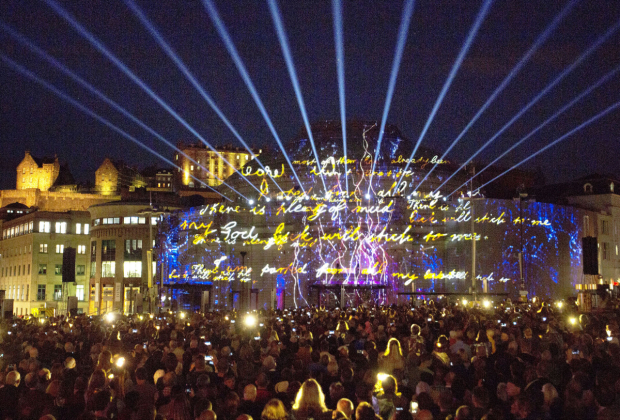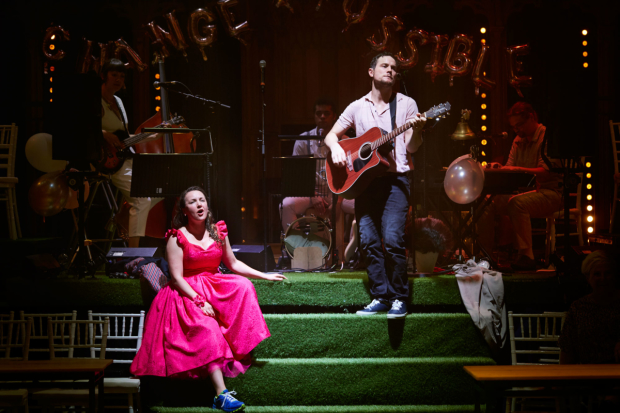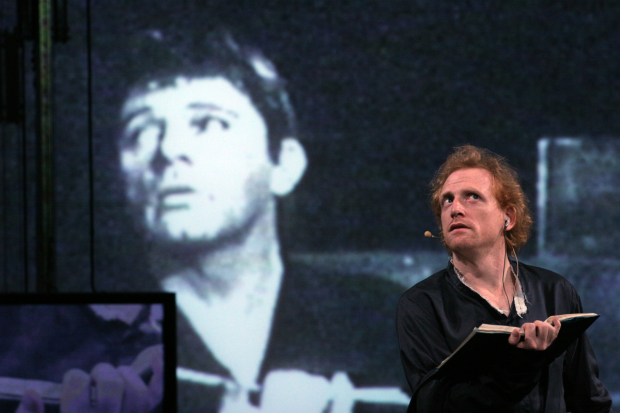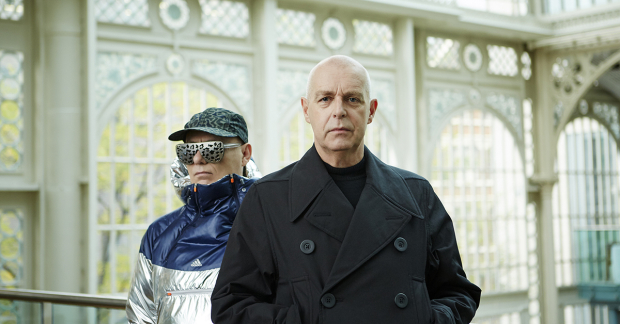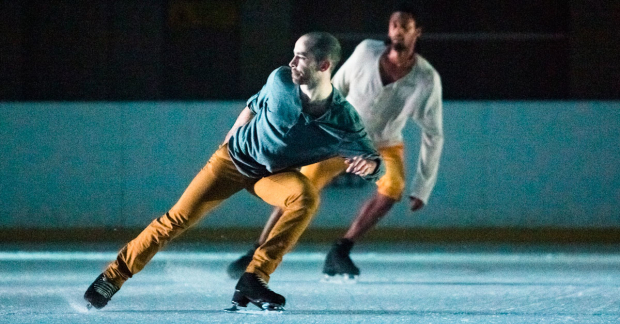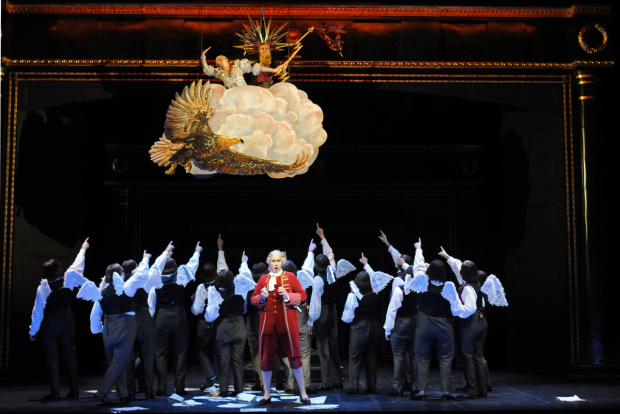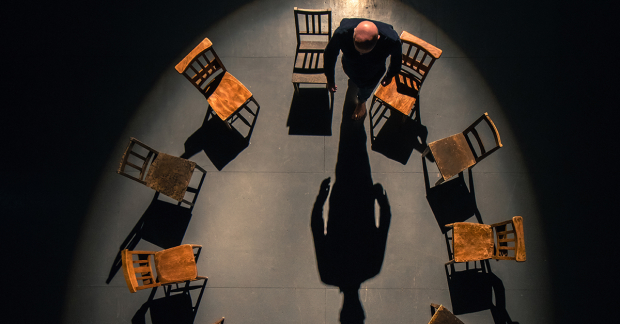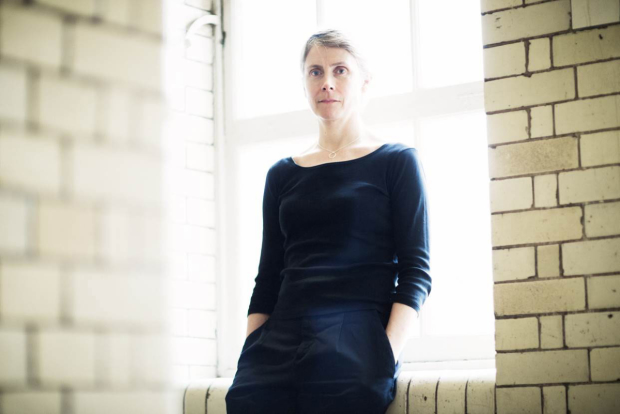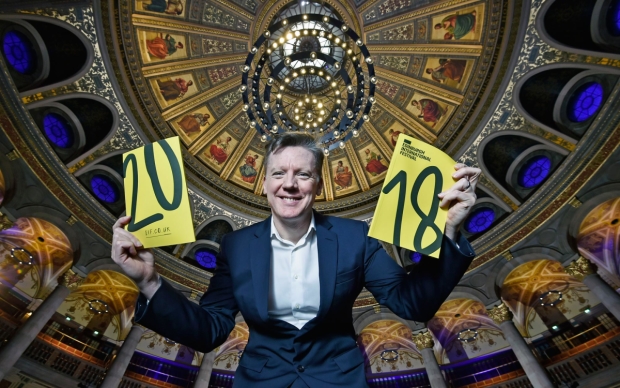Review: Cold Blood (King's Theatre, Edinburgh International Festival)
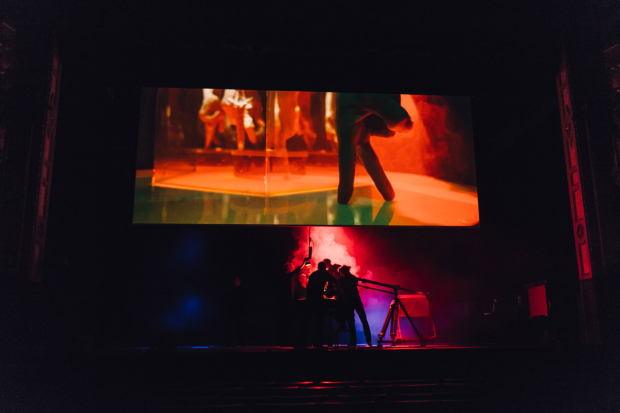
© Ryan Buchanan Photography
This is the most magical show, original and creative, which takes a child's playbox of toys and transforms them into a resonant, sophisticated piece of theatre.
The company Kiss & Cry Collective takes its name from its first show, and its originality from the fact that it is made up of the dancer Michèle Anne De Mey and her husband, the film-maker Jaco Van Dormael (Toto the Hero, The Eighth Day). Together, with the help of writer Thomas Gunzig, they conjure wonders, using the hands of three dancers to tell their stories.
Above there is a projection screen, below the frantic buzz of activity that creates in real time the images we see, accompanying a dreamlike narrative about seven deaths. It's like simultaneously seeing a movie and watching how it was made in days of old, before the invention of green screen special effects. So we see a woman draped on a bed like Chatterton, but on the screen above, we watch her framed by an open window, floating in the air. We watch a man shake a bundle of lights at a camera; on screen we see them explode like fireworks in a kaleidoscope.
It is hard to describe how beautiful these vistas are, suites of rooms like those in a doll's house, cities of skyscrapers, the red fires of a blitz, the smoky vistas of outer space. Accompanied by a soundtrack that encompasses everything from Schubert to Nina Simone and David Bowie, the dancers' hands stalk the landscapes, becoming people in front of our eyes.
At one moment they are tap dancers, fingers clad in tiny silver thimbles, as elegant as Fred and Ginger; at another, they are performers in an Esther Williams water ballet. They walk mean streets and sit in cosy rocking chairs. They go to a drive-in, or to a car wash (made with feather dusters) or a lap dancing club. They dance to Ravel's "Bolero" in the style of Maurice Bejart and float in outer space like Major Tom. Each death, and the memories it triggers, is described in the narrative and evoked on the film.
The seven deaths have echoes of the seven deadly sins and the seven pillars of wisdom; each has its own characteristics (often related to the history of film) and each triggers a sense of sadness, melancholy and solitude. What matters in the end is the beauty and richness of each scene. It is entirely original and totally entrancing.
This three-day sojourn as part of the Edinburgh International Festival is its British premiere and its only UK outing but it deserves to be seen much more widely. From the audience reaction, it could run and run.



